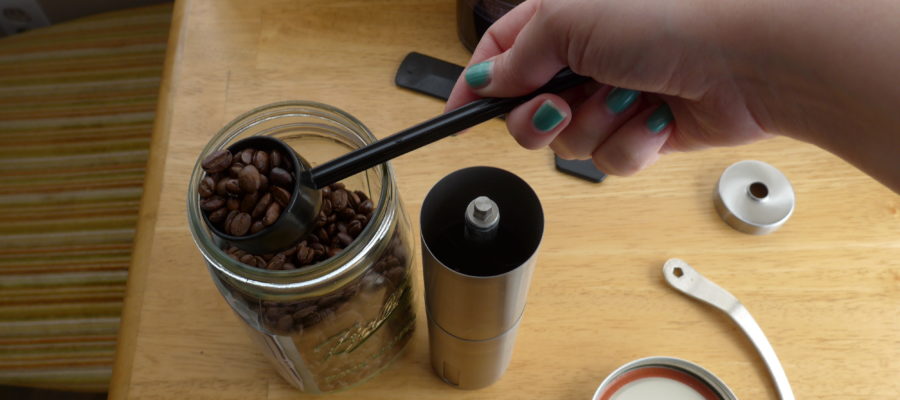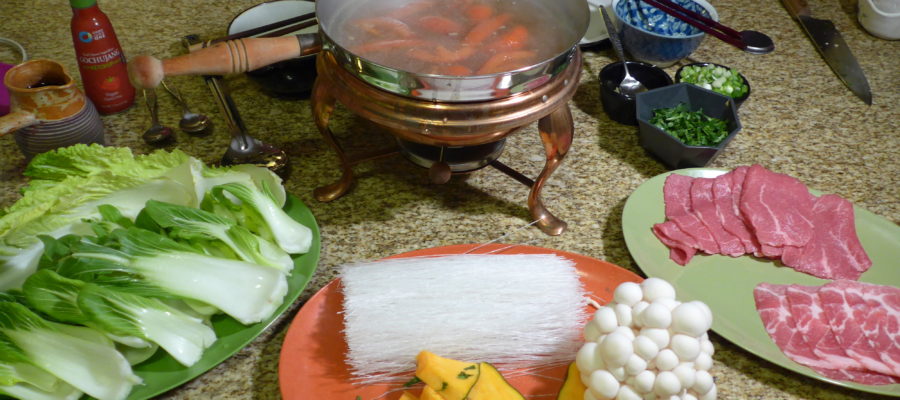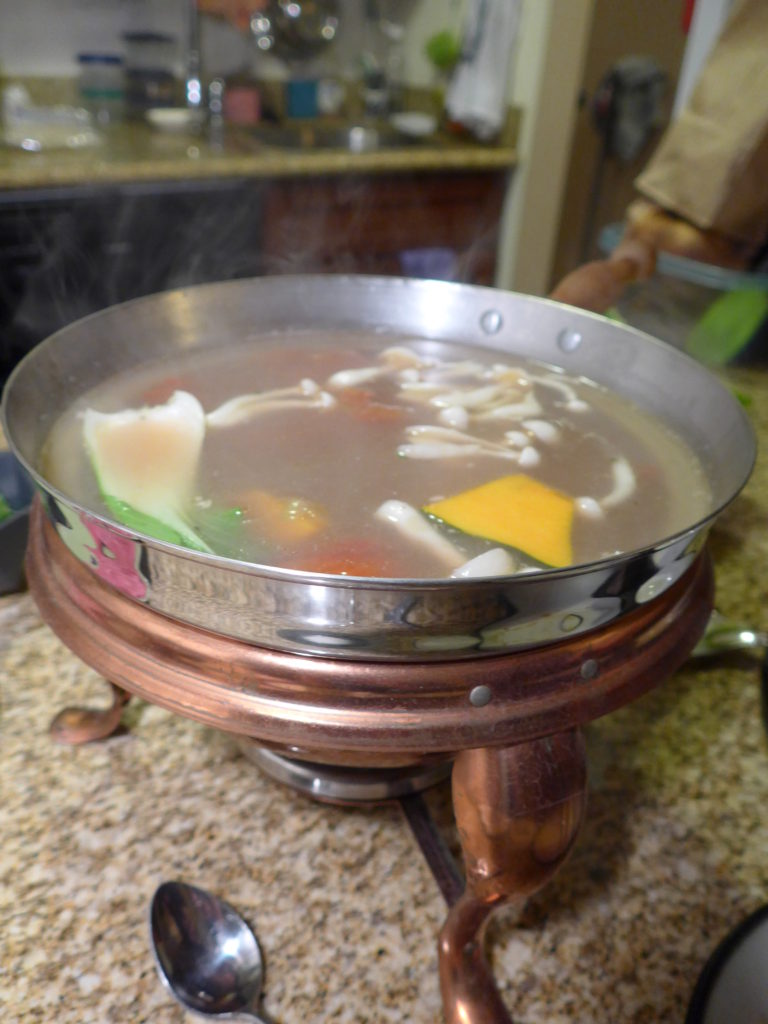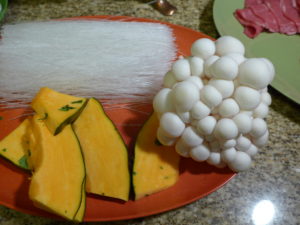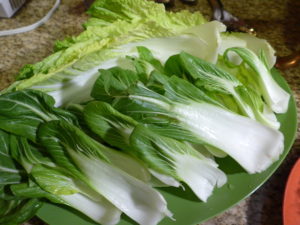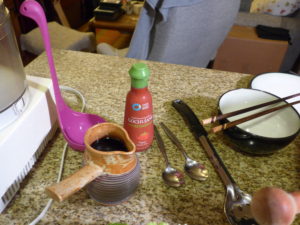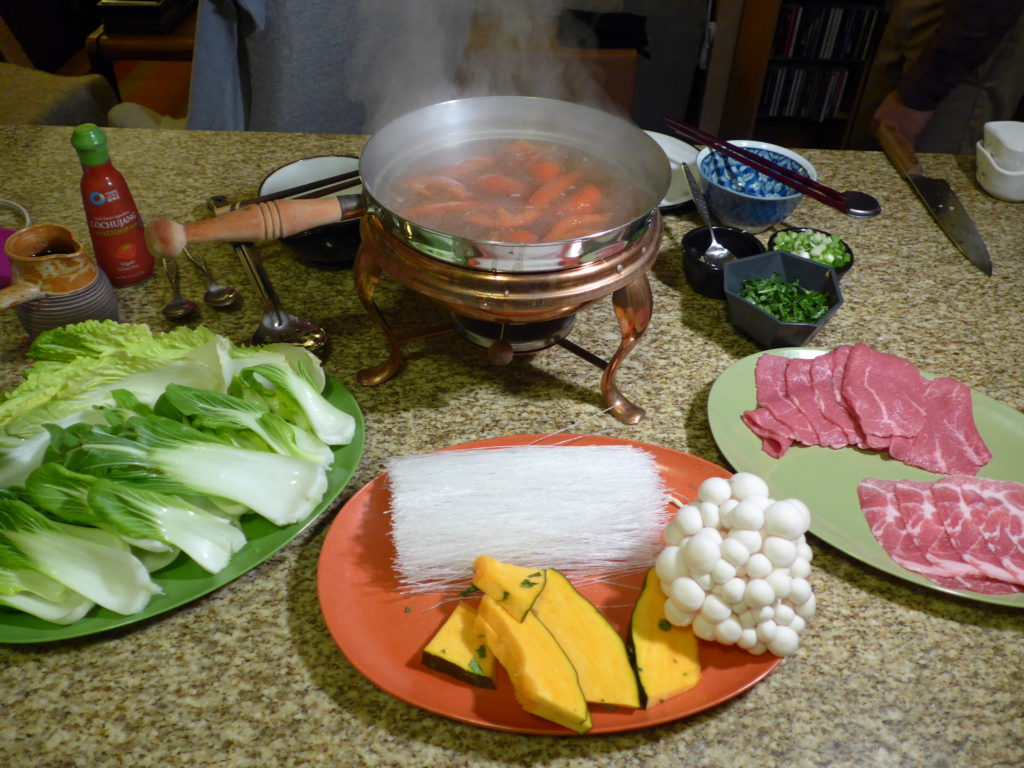
Coffee. Coffee. Blog post. Coffee. Tea drinkers, go here. This post isn’t about the history or origins of coffee, but about making one great cup each weekend when mornings suck a lot less. Denise will laugh at the entire idea of ONE cup of coffee, but we do both love it in different quantities. Coffee is great because it’s not an allergen for most people — but drinking coffee out can have its pitfalls — most coffee shops serve treats (gluten, egg, dairy) and milk and nut milks. Coffee can be processed with ingredients that cause some people issues — I haven’t hit those yet, luckily. So here’s my coffee journey.
In 2016, as regular readers of the blog know, I moved across the country to Seattle, a city well-known for its coffee culture. In part, this is climate. I learned to really drink coffee in Oregon, my first foray into the Pacific Northwest, where winters are grey and damp and only a hot beverage will get you through the days. In Eugene, you can’t go half a block without hitting coffee, at least not near the university. Seattle’s not that different, though a lot of the shops are Starbucks. I’ve seen the first espresso cart that came to the city (imported from Italy, it’s now in the collections at the Museum of History and Industry), and every time we get to try a new coffee house, I get a little excited. I’ve become a coffee snob, but that doesn’t mean I’d turn down archaeologist coffee.
For the most part, I’m a simple coffee drinker. I learned to make mochas at my sandwich shop job last century, and while I did not like coffee much, I loved complicated coffee beverages. But I truly love the taste of coffee now, and most days, I want a cup of black drip coffee or an Americano (espresso + water). Occasionally, I like a good almond milk latte, and there’s one place that makes a great cappuccino with almond milk.
But my home coffee game has definitely gotten more complicated. I’ve owned drip brew coffee makers (messy to clean a reusable filter & makes too much) and French presses (terrible to clean). I went through an instant espresso phase (and still keep that around for baking. I don’t drink a lot of coffee, but I need that cup.
I tend to only make coffee on the weekends — in the past, I’d drink coffee at work no matter how terrible it was. (Fun side note, I was banned from making coffee at a former job because I made it too strong). But work now, we have excellent amazing coffee from a local roaster, Pine Drop.
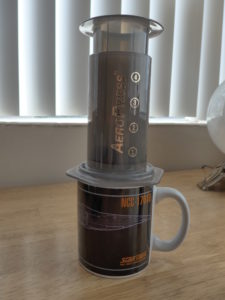
After some research, I decided that an Aeropress might be the best fit for me. This tube system would travel well, and making only one cup means that you’re almost never going to drink cold coffee. Making coffee in the Aeropress feels like a game. Cleaning it is a breeze, as the coffee just pops out into the trash or compost. And the coffee itself is good.
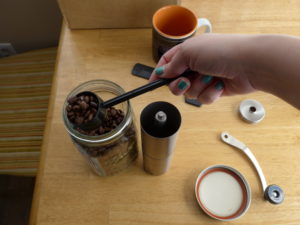
But after I determined that Jack wasn’t suddenly going to become a coffee drinker in Seattle, I started buying whole beans because my ground coffee was getting stale. I bought a small burr hand grinder, as I hate noise in the mornings. When we went to Hawai’i, toured a Kona coffee plantation, got hyped on samples, and bought fancy coffee I adore.
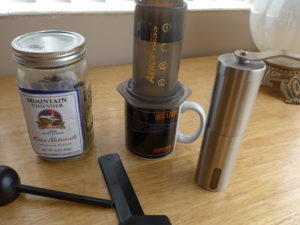
So this is my hipster weekend coffee routine:
I hand-grind about 2 Tablespoons of Kona coffee from a plantation I personally toured in my burr grinder. This takes about 2 minutes. Meanwhile, I heat up water to 185 degrees in my adjustable thermostat electric kettle. I put a paper filter in my Aeropress and set it atop one of several Star Trek mugs, and I press out one shot of coffee. I then add a bit more water for an intense Americano, or occasionally I steam some almond milk for a homemade latte.
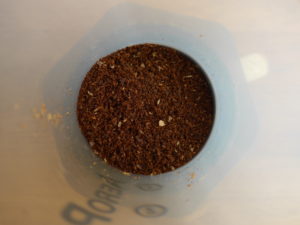
Here’s what I use [not affiliate links]: Mountain Thunder coffee, JavaPress Manual Grinder, VonShef electric kettle, Aeropress coffee maker, and the Secura Automatic Milk Frother.
As a “bonus” bit of fun, I made a video of using the Aeropress.
